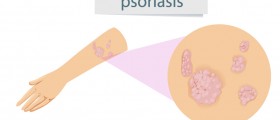
What is pyoderma gangrenosum and how is it treated?
Pyoderma gangrenosum is a medical term for the skin condition which manifests through the ulcers that are large and very painful and that most frequently appear on legs, though they can develop practically anywhere. The main characteristics of this condition are lesions, which usually first begin as small red bumps, and then turn to ulcers with the surrounding skin of purple or red color. Besides these symptoms, pyoderma gangrenosum tends to cause ache and pain in the bones and general unwell feeling. It is also possible that a few ulcers will grow and merge into one big ulcer.
This condition demands medical treatment, because that way the ulcers may be kept under control and the open wounds can be healed. The process of the treatment is unimaginable without corticosteroids, immunosuppresants and nonsteroidal anti-inflammatory medications, even though drugs such as tumor necrosis factor inhibitors and intravenous immunogobulin are used when corticosteroids aren't that much helpful. The recovery of the skin takes about several months in order to be complete.
What are the main causes of pyoderma gangrenosum?
There are several types of this condition, but the real cause of this condition has not really been determined yet. However, since the majority of the patients with this disease already has some other underlying condition, it seems to be linked with a number of other conditions, among which are also ulcerative colitis, hepatitis, Crohn’s disease, leukemia, and rheumatoid arthritis. Also, the disease is believed to have something to do with dysfunction or the improper functioning of the immune system and neutropolis. Pathergy is the name of the tendency of this diseases to form even from a smallest trauma, not to mention the surgery. People who are a bit more likely to experience it are those older than 45, and those who suffer from some kind of the already mentioned conditions to which it is linked. There are no many possible complications, and the most common one is the scarring of the skin.
In order to diagnose this disease, it is necessary to visit the doctor, who will perform a physical exam in the first place, and who will then order bloood tests or some other tests along with this one in order to check for the underlying disease. Skin biopsy is another method that can be helpful in supporting the diagnosis, or ruling out this possibility.

















Your thoughts on this
Loading...